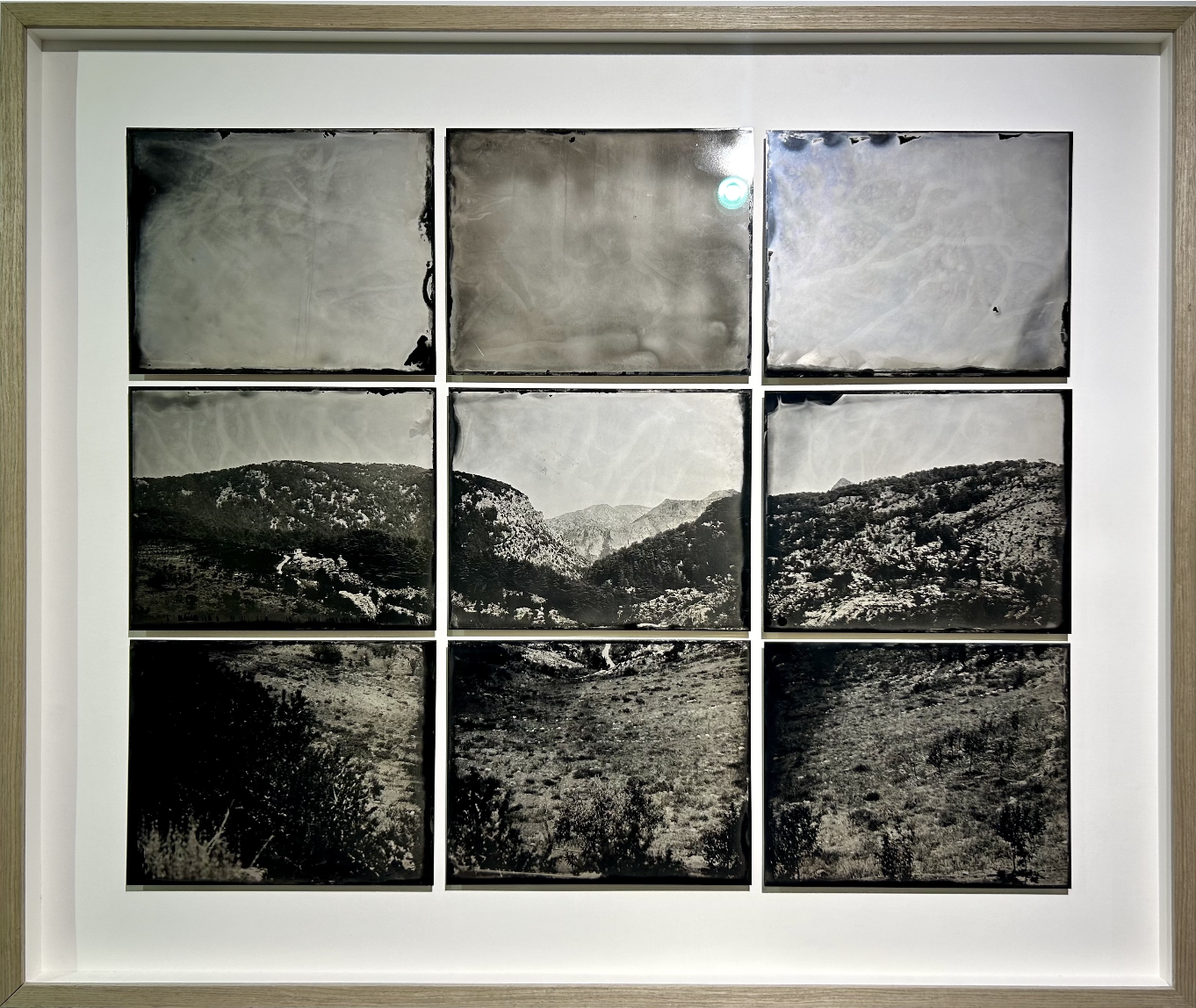On view from 15 February to 23 March 2024 at Agial Art Gallery (Hamra, Beirut), ‘Lebanese Landscapes’ is an exhibition of paintings and drawings curated by Randa Sadaka.
The exhibition borrows works from private collections around the theme of landscape: varied in their depictions, the artworks are representative of singular trees, statuesque, blooming and radiant, frozen moments of tiny villages perched on the Mediterranean sea, scenic views of mountains and valleys, almost always adorned with the traditional Lebanese stone houses and red-tiled roofs, and abstracted paintings that exploit the colors of natural scenery: sea blues, tree greens, and sun yellows.

When displayed in the exhibition space, spread over two floors, the artworks - dating from the early 1900s until today - present themselves as singular records of time and perception, but it seems they do not offer a larger understanding of landscapes as expected from a curated exhibition, where artworks are chosen to speak to one another, displayed across from one another, and allow a conversation to take place within a space that transcends the understanding of a singular artwork. In this reviewer’s opinion, the exhibition does not provide any context of social or political movements that underscore landscapes as records of time, space, and energy by modern and contemporary artists.
The exhibition does present some wonderful surprises, notably three small-scale works that pack a punch: George Corm’s s delicate oil on canvas (fig. 1), Farid Mansour’s colorful depictions of Egyptian scapes in mixed media on cardboard, and George Doche’s masterful lithograph depiction of flora, as well as a haunting photograph by Jack Dabaghian of Tannourine produced as a mosaic of nine squares using a wet plate collodion technique on black aluminum (fig. 3), and finally, two delightful oil on panels by Khalil Zgaib (fig. 2).

The wall text asks “what does the painting say about our landscapes?”. Well, not much, I believe.
Artists render landscapes: it is an exercise to understand form, depth, color, composition on a subject that is readily available; the land that surrounds them. Landscapes as a form of artistic expression almost litter public exhibition spaces and private residences. The premise is clear: to choose a viewpoint, a position from which they are representing a frame of a place, pinning a geographical site and freezing it in time, allowing elements of weather, light, perception, architecture, and ecology to infiltrate the frame, and capturing an energy, in space, in time.
In The Production of Space, French sociologist Henri Lefebvre explores the social construction of space, arguing that space is not just a neutral backdrop but is actively produced and shaped by social relations, power dynamics, and everyday practices. He writes “When we evoke 'space', we must immediately indicate what occupies that space and how it does so: the deployment of energy in relation to 'points' and within a time frame. When we evoke 'time', we must immediately say what it is that moves or changes therein. Space considered in isolation is an empty abstraction.”2
The exhibition grounds landscape in attempts of belonging, idealization, and patriotisation. The emptiness of the sceneries denudes them of any sort of potential reading related to time - here, history. And so the accrochage falls into the trap of the romanticization of land as only a space of longing and belonging.
Steeped in apoliticality, the exhibition misses an opportunity to question the inherent politicality of land; through concerns of border disputes, resource exploitation, ecocidal efforts, political manipulation of indigeneity, resistance, and rootedness.

Exhibition Details
Randa Sadaka, curator. Lebanese Landscapes
15 February - 23 March 2024. Agial Art Gallery, Beirut